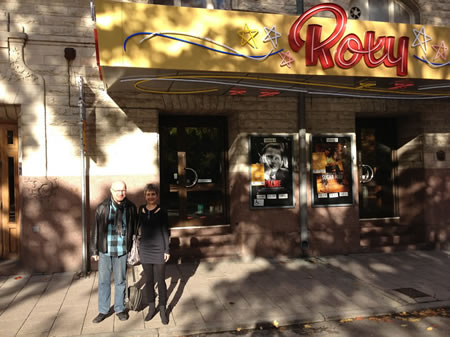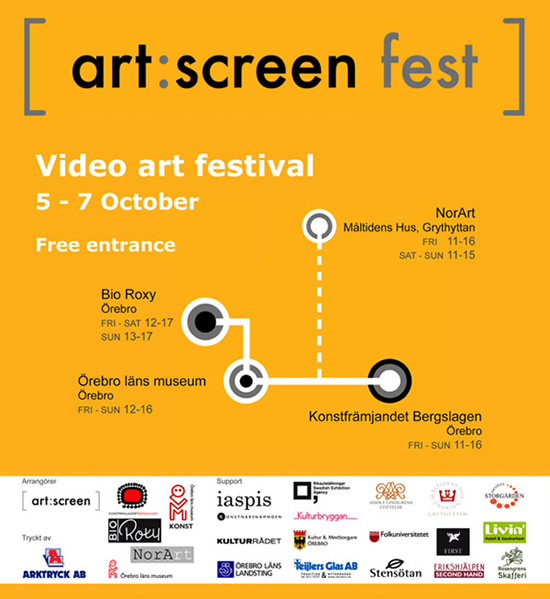|
Don't Eat the Yellow Snow |
| Festival Miden festival dates: July 4 - 6, 2013 Don't Eat the Yellow Snow screening on... July 5, 2013 Kalamata's Historic Center (Amfeias' square) Kalamata, Greece The central curating is signed by Gioula Papadopoulou and Margarita Stavraki, while certain programs were curated this year by Ioanna Dimitrakopoulou-Koutava, Terpsi Kontargyri, Maria Bourika and Manuela Gascon. Press Release: |
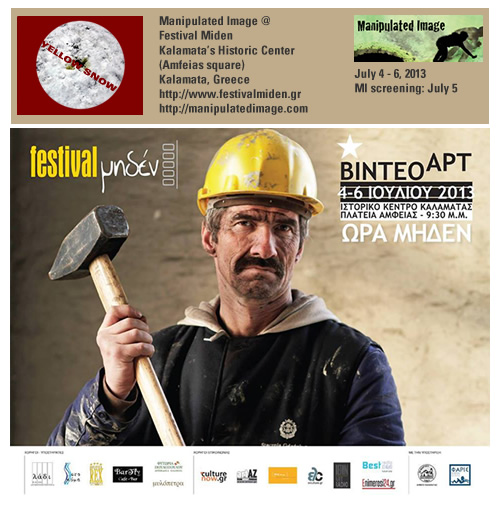 |
|---|
BACK TO TOP
 art:screen fest goes on-tour.... presenting Don't Eat the Yellow Snow on March 9 - April 21, 2013 Vetlanda Museum Sweden organized by art:screen co-founders and curators: Eva Olsson & Jonas Nilsson Also see MI's "CURATORS & PARTNERS" DOWNLOAD CATALOG HERE (1.8 MB)... 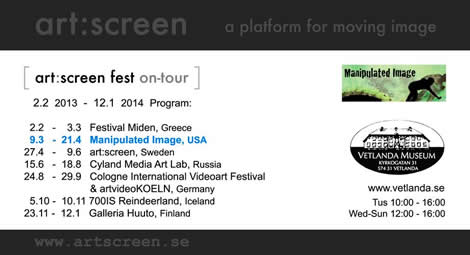 |
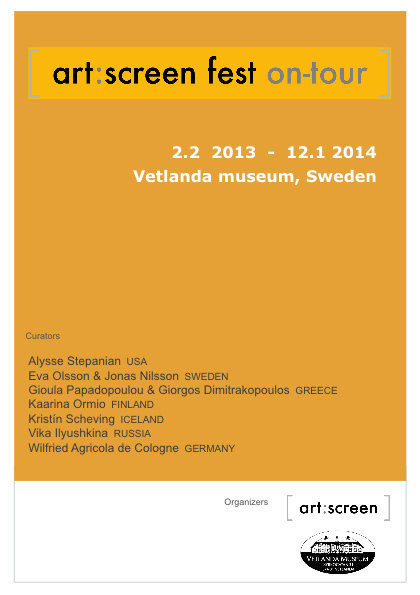 |
|---|
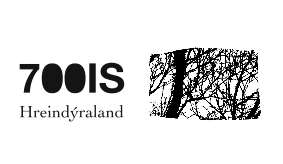 Don't Eat the Yellow Snow goes to Iceland... In this event Stepanian's video, Roghieh will also be screened with the Don't Eat the Yellow Snow compilation 700IS Reindeerland event at the Nordic House (Feb 7-10, 2013) Manipulated Image screenings: Friday, Feb 8, 22:30 and Saturday, Feb 9, 18:30 700IS Reindeerland is based in Reykjavík and was founded and is curated by artist and curator, Kristín Scheving Also see MI's "CURATORS & PARTNERS" 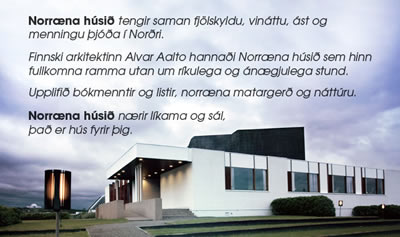 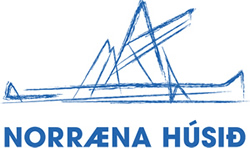 |
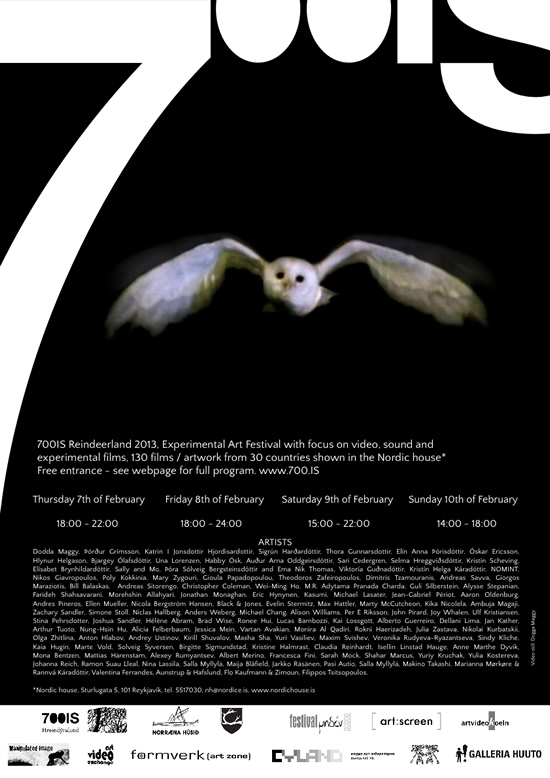 |
|---|
art:screen Fest 2012 October 5 - 7, 2012 opens October 5 @ 12:00 - Bio Roxy screening of "Don't Eat the Yellow Snow" @ 13:30 Örebro, Sweden ABOUT THE FESTIVAL: During the festival there will be 109 videos screenings selected by 14 invited curators by artists from 31 countries in 16 programs and... 5 video installations by 6 artists Arranged by Head organizers of the festival are art:screen co-founders and curators: Eva Olsson & Jonas Nilsson |
“Don’t Eat The Yellow Snow” |
PROGRAM 1) Christopher Coleman (Colorado/USA) 2) Wei-Ming Ho (Taipei/Taiwan) 3) M.R.Adytama Pranada Charda (Bandung and Jakarta/Indonesia) 4) Guli Silberstein (London/UK)
|
6) Farideh Shahsavarani (Tehran/Iran & Chicago/USA) 9) Eric Hynynen (Ivalo/Finland) 10) Kasumi (USA) 11) Michael Lasater (Indiana/USA) |
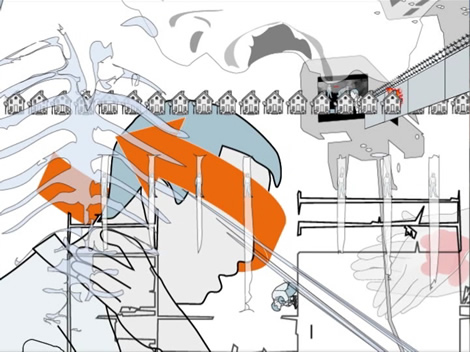 BIO: Christopher Coleman received his BFA in his native state from West Virginia University in 2001 and his MFA from New York State University at Buffalo in 2003. A number of his undergraduate years were devoted to studying Mechanical Engineering, knowledge that he brings to bear in his installations. His work includes sculptures, performances and videos as well as interactive installations. Coleman was twice a participant in the VIPER Basel Festival in Switzerland and has had his work in exhibitions in Singapore, Finland, Sweden, Italy, Germany, France, China, the UK, Latvia and 14 other countries. Domestically his work has been shown at more than 40 events and festivals, Spaces Gallery in Cleveland, the Albright Knox in Buffalo NY, and the Boulder Museum of Contemporary Art to name a few. In 2009 he received the Metropolis Art Prize Grand Prize and had his work featured in Times Square NYC. He currently resides in Denver, Colorado and is an Associate Professor at the University of Denver. |
Christopher Coleman (Colorado/USA) ARTIST STATEMENT: "Modern Times" is an animation created over 18 months and completed in 2005. Because the Department of Homeland Security made their Terrorism Readiness brochures available in digital format, much of the imagery in the video is directly taken from the source, recontextualized, arranged and animated. The original movie, Modern Times, featured Charlie Chaplin struggling to deal with man’s relationship to technology in the Industrial Age. We have now moved into the Age of Information in which our connection to the world around us is not only defined by technology, but the information it does or does not provide. When first encountering these brochures I was struck by how they, along with other safety illustrations like those found in the back pocket of every airplane seat, are supposed to simultaneously alarm and calm us. There is no sign of fear on the faces of the generic passengers bracing for a water landing. It is interesting to note that while the public was still quite shaken from the events of 9/11 when the US government released these brochures, they were an instant source of ridicule. I have attempted to return their levity but with a different focus.
|
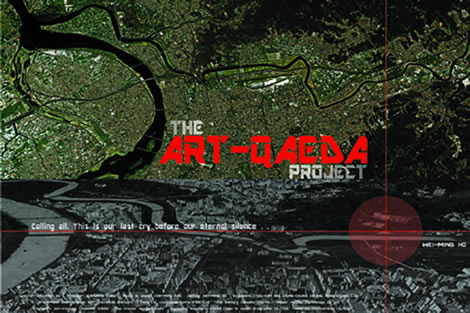 BIO: Wei-Ming Ho was born in Taipei. He is a visual artist and filmmaker. He works across the fields of experimental film, video installation and media art. His works have been presented in cinemas and artistic contexts. |
Wei-Ming Ho (Taipei/Taiwan) ARTIST STATEMENT: |
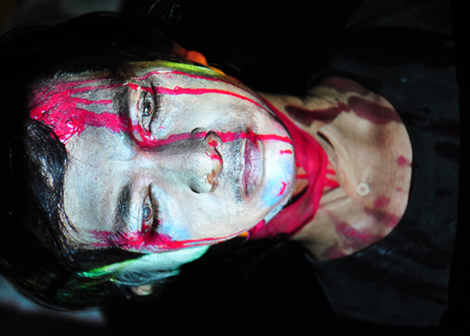 BIO: M.R.Adytama Pranada Charda (born 1987) lives and works in Bandung and Jakarta, Indonesia, as an artist and Art Director for Liaison Art & Visual Project, a contemporary artist and design initiative. Current awards include: 1stPrize Soemardja Award 2011, Soemardja Gallery, Institute of Technology Bandung (ITB), Bandung. Best Video in OK Video “Flesh”, the 5th Jakarta International Video Festival, National Gallery, Jakarta. |
M.R.Adytama Pranada Charda (Bandung and Jakarta/Indonesia) ARTIST STATEMENT: I live in Indonesia, a democratic country that since its establishment has had a long history of violent conflicts. This work is about how actually subconsciously, explicitly, the ruling party or the media uses fear and violence as a selling tool and controller, without us realizing that we have 'approved it and enjoy it' through the shows on television, until conflict games – it is also suspected that recent violent conflicts in Indonesia is due to the impression that rampant violence has eventually become 'the role model' and most efficient way to resolve problems. But actually violence has also occurred due to the ruling party's repressive reaction not only in Indonesia, but also in other countries. G30S/PKI (Communist ‘partai’ uprising) museum diorama's mannequin image that describes the seven military generals, who were kidnapped and tortured by the communist party sympathizers, is projected onto the place of privacy of a home. The G30S/PKI Indonesian Communist Party uprising to overthrow the government was thwarted by General Soeharto. He used this to get rid of his political opponents, consolidate his power, and become the president of Indonesia. This also caused millions of deaths, missing people, detentions on charges of communism without obvious reasons, and millions of other people experienced physical and mental harassment. In my childhood, I was forced to go to the museum and watch the movie about Soeharto's 'Heroism' on the national television. The museums are still running, and with its subtle ruling party these methods are still used. |
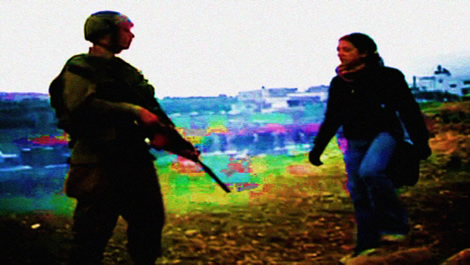 BIO: Guli Silberstein (b. 1969) is an Israeli-born, London-based video artist. He received a BA in Film & TV from Tel-Aviv University in 1997 and a MA in Media Studies, specializing in digital video and media art, from New School University, New York City, in 2000. Since then, he has been working with appropriation to produce video art works dealing with situations of war & terror, cognitive processes and electronic media, which have been extensively presented in festivals, museums and galleries including: Transmediale Berlin, Kassel Film and Video Festival, EMAF Osnabrueck Germany, ‘Human Frames' exhibition & DVD Lowave Paris, Museum on the Seam Jerusalem and the National Centre of Contemporary Art Moscow. |
Guli Silberstein (London/UK) ARTIST STATEMENT: “Truth to tell, the best weapon against myth is perhaps to mystify it in its turn, and to produce an artificial myth: and this reconstituted myth will in fact be a mythology” |
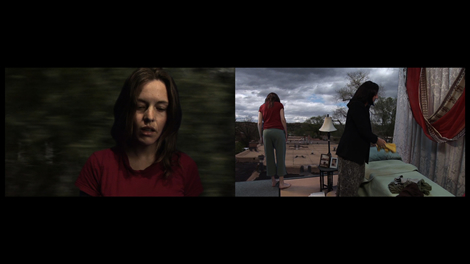 BIO: Please see here... |
Alysse Stepanian (Los Angeles/USA) ARTIST STATEMENT: |
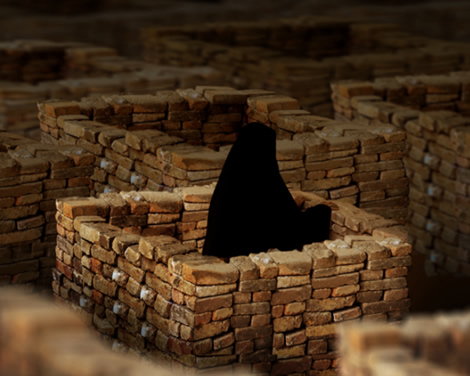 BIO: Painter, photographer, and video/filmmaker, Shahsavarani is well known for combining sound and pictures in a variety of art forms. Farideh holds an MFA in Painting, has served as Department Chair of the Graphic Department at Islamic Azad University in Tehran, and currently serves as a member of the faculty board. Farideh is a Member of the Association of Iranian Painters (AIP), an Honorable Member of the Visual Art Development Center of Iran and a member of Group 30+. She has participated in over 12 solo and over 90 group exhibitions internationally. Farideh began her art career painting at an easel, but with changing times, her perspective changed. She began to sculpt, weave, cut, smash, attach, detach, build up, tear down—searching for the means to express her obsessions and the burning questions. She discovered video—a means to draw her audience into her work so that they face the whys and wherefores and become an essential part of the work. This mixture of images and space make it possible to express reality and illusion and has opened a broad spectrum of possibilities to create works that communicate more directly—allowing her to express her search for the light, the soul, the hidden meaning of life and the source of a new day. |
Farideh Shahsavarani (Tehran/Iran & Chicago/USA) ARTIST STATEMENT: It shelters us from nature's violent forces, as it hinders us to see the light rising from the horizon. It has become, through times, part of our heritage. Part of the genetic structure of our civilization. WE ALL, women as men have had our share of rising them to heavens, or surrounding our nearest and dearest by them, condemning those to live in hell. Deep inside, we are imprisoned by our own fears, prejudice and ignorance. These invisible ones are the most vicious. Therefore The emergence of the myth of FREEDOM. I am talking about WALLS. |
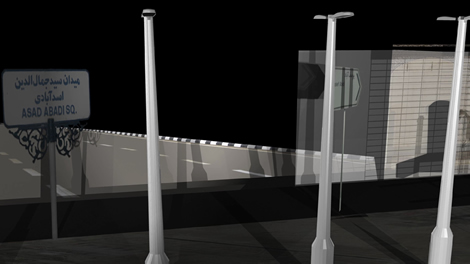 BIO: Morehshin Allahyari is a new media artist and an art activist. She was born and raised in Iran and moved to the United States in 2007. Her creative and research interest encompasses 3D animation, digital filmmaking, web-art / design, performance and extensive activity as a curator and producer. The topics of her practice include the social, political and cultural issues of Iran, creative writing, art activism, media art, and collaborative art. Morehshin’s animated films and curatorial projects have received worldwide acclaim. She has been part of exhibitions, festivals, and conferences in Tehran, Denver, Dallas (Dallas Biennale + oliver Francis Gallery), Chicago, New York, Germany (The 7th Berlin International Directors Lounge (Berlin) + 25th European Media Art Festival (Osnabrück), Virginia (The Taubman Museum of Art), San Francisco, Denton (University of North Texas), Portland, Ohio, Brazil, Sweden, Romania (Arad art Museum), Netherlands, and Canada. |
Morehshin Allahyari (Dallas & Denver/USA) ARTIST STATEMENT: |
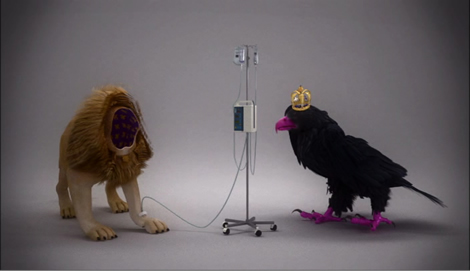 BIO: Jonathan Monaghan (b. New York, 1986) makes CGI animations with a range of iconic subject matter. From mythical animals, to video games characters, to Baroque architecture, Jonathan's work creates a distorted mix of reality, imagination and cultural critique. Work by Jonathan has been shown in the Hirshhorn Museum in Washington D.C., the BFI Southbank in London, the Today Art Museum in Beijing, as well as other galleries and venues in New York, Oslo, Berlin and London. Jonathan has been awarded residencies from MakerBot Industries in New York, Yaddo in Saratoga Springs, and Seven Below Arts Initiative from Burlington City Arts in Vermont. |
Jonathan Monaghan (New York/USA) ARTIST STATEMENT: |
BIO: Eric Hynynen is a Finnish/Australian artist living and working in Ivalo. He completed his Master of Fine Arts in 2009, at the Finnish Academy of Fine Arts, Helsinki. |
Eric Hynynen (Ivalo/Finland) ARTIST STATEMENT: “Boxed” expresses a concern for the shortening or loss of childhood in today’s world. Training for working life and a good job starts earlier and earlier. Kids are often under a great deal of pressure, as they compete against others within the education system. This begins at an earlier and earlier age. Increasingly, out of fear, we train (educate?) our young to become tools for those in power. Our children must be prepared for the competition of life, or they will be left behind. |
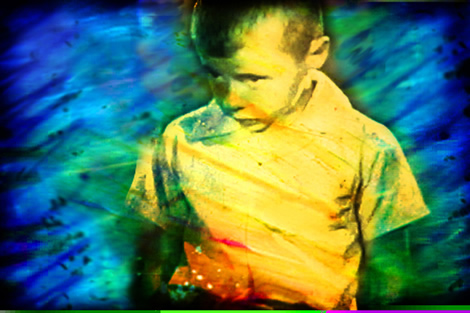 BIO: Kasumi is a media artist uniquely blending film and live-performance into dynamic videoart. Known internationally for her innovative work, she employs an arsenal of powerful digital technology to weave vibrant visuals and powerful audio into experiences of synaesthesia, with poignant cultural-political meaning. Kasumi’s richly expressive and compelling compositions have appeared worldwide at venues including from Carnegie Hall and Württembergischen Kunstverein Stuttgart. She has collaborated with the likes of Grandmaster Flash, DJ Spooky, and the New York Philaharmonic. Most recently Kasumi expanded her repertoire to include the role of executive producer of young filmmaker Kitao Sakurai’s feature, AARDVARK. Her video, “Breakdown, The Remix” was the 2010 Vimeo Awards Remix Winner, and in 2011, she was named a CPAC Creative Workforce Fellow and was awarded a John Simon Guggenheim Memorial Foundation Fellowship. |
Kasumi (USA) ARTIST STATEMENT: |
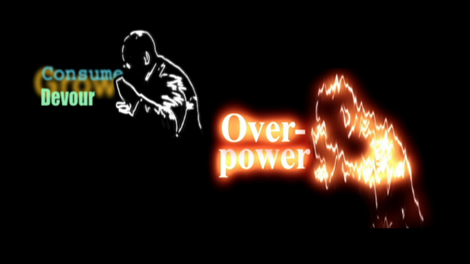 BIO: Michael Lasater was born in 1947, in Hutchinson, Kansas, USA. A professor, musician, filmmaker and gallery artist, he holds degrees from the Oberlin Conservatory, the Juilliard School, and Syracuse University. His work in documentary and gallery art has been widely exhibited in the United States and Europe, including the Hun Gallery New York, California Museum of Photography, Athens Institute for Contemporary Art, Dallas Center for Contemporary Art, University of Rome, Wienviertelfest-Austria, and others. BACK TO TOP |
Michael Lasater (Indiana/USA) ARTIST STATEMENT: |

